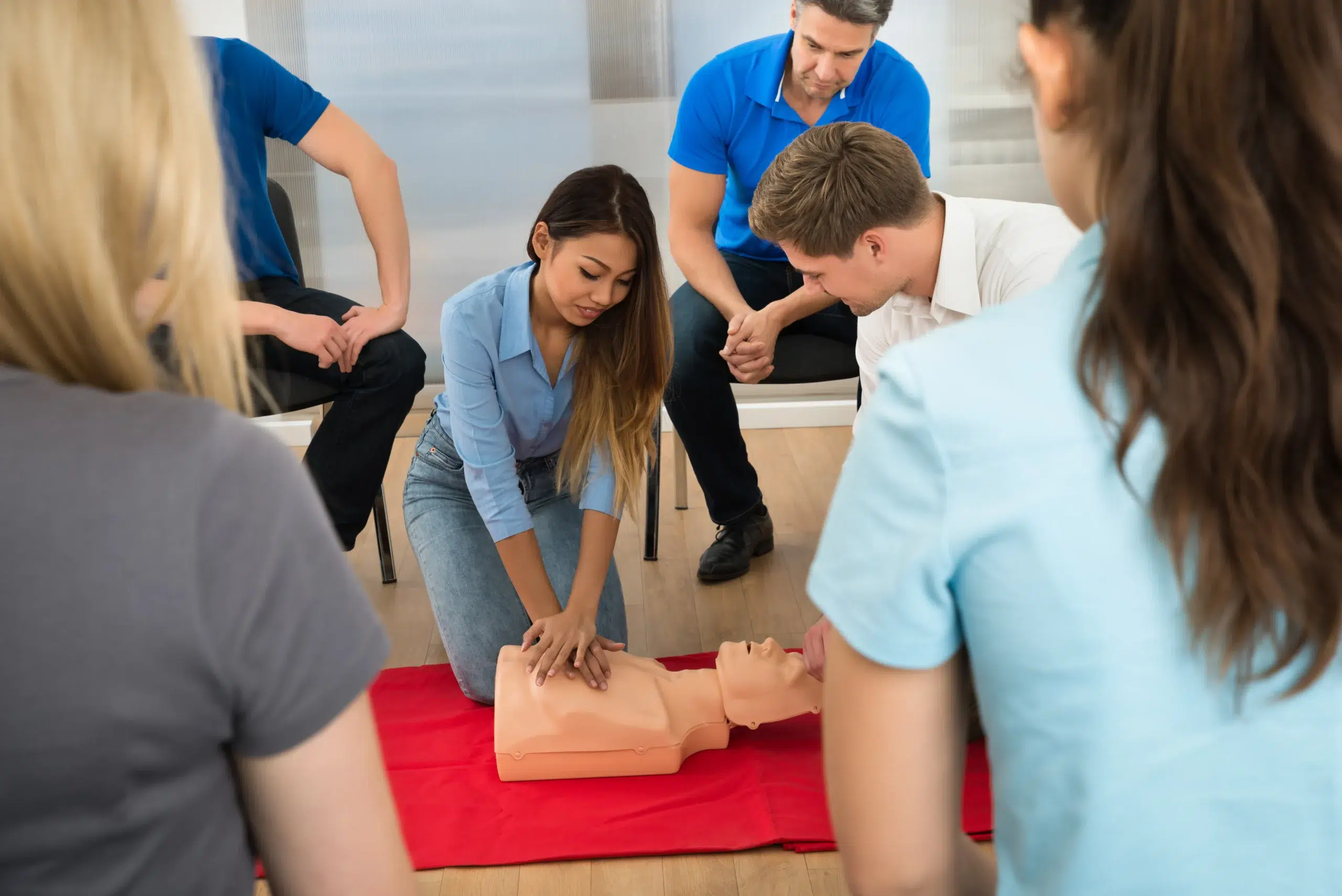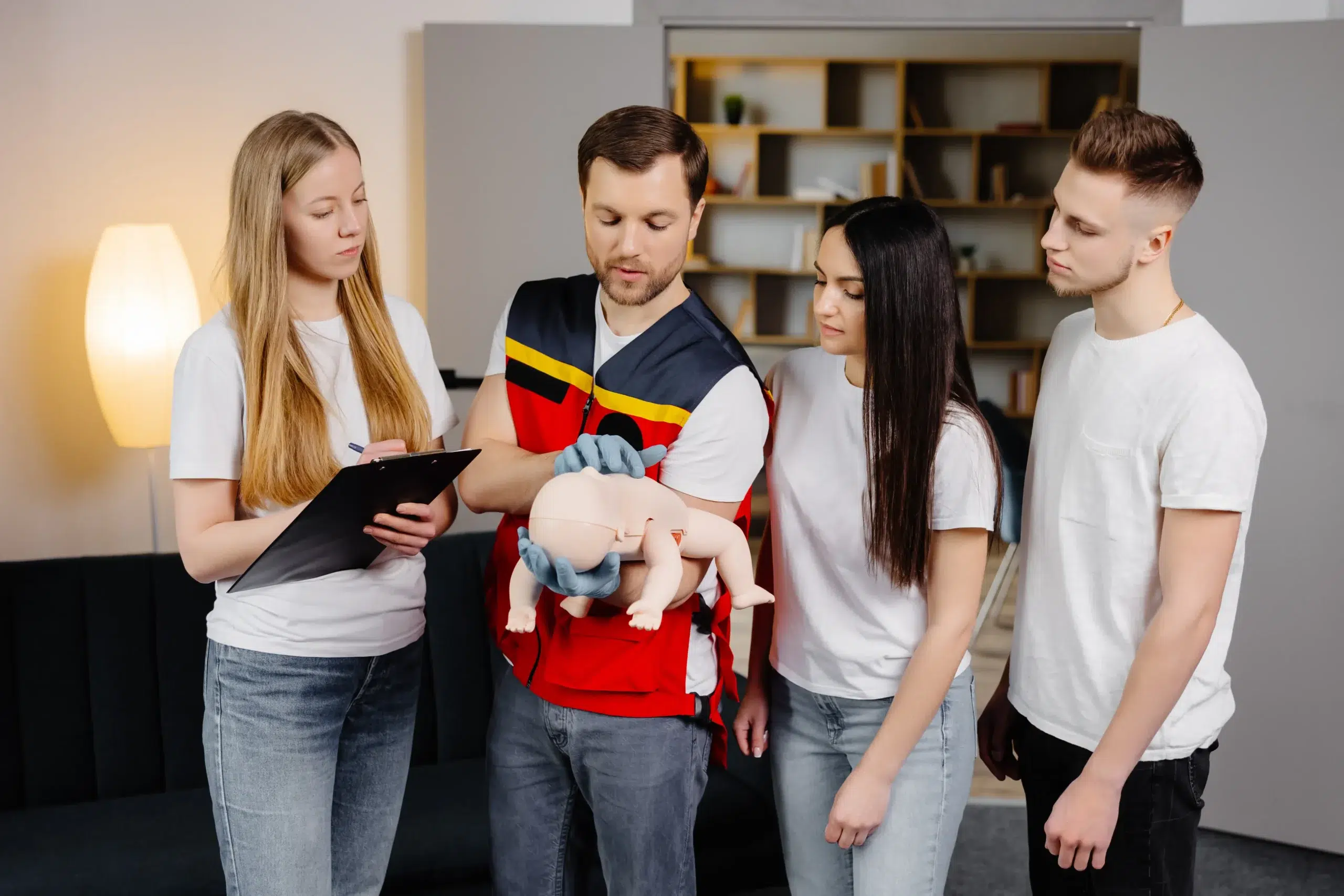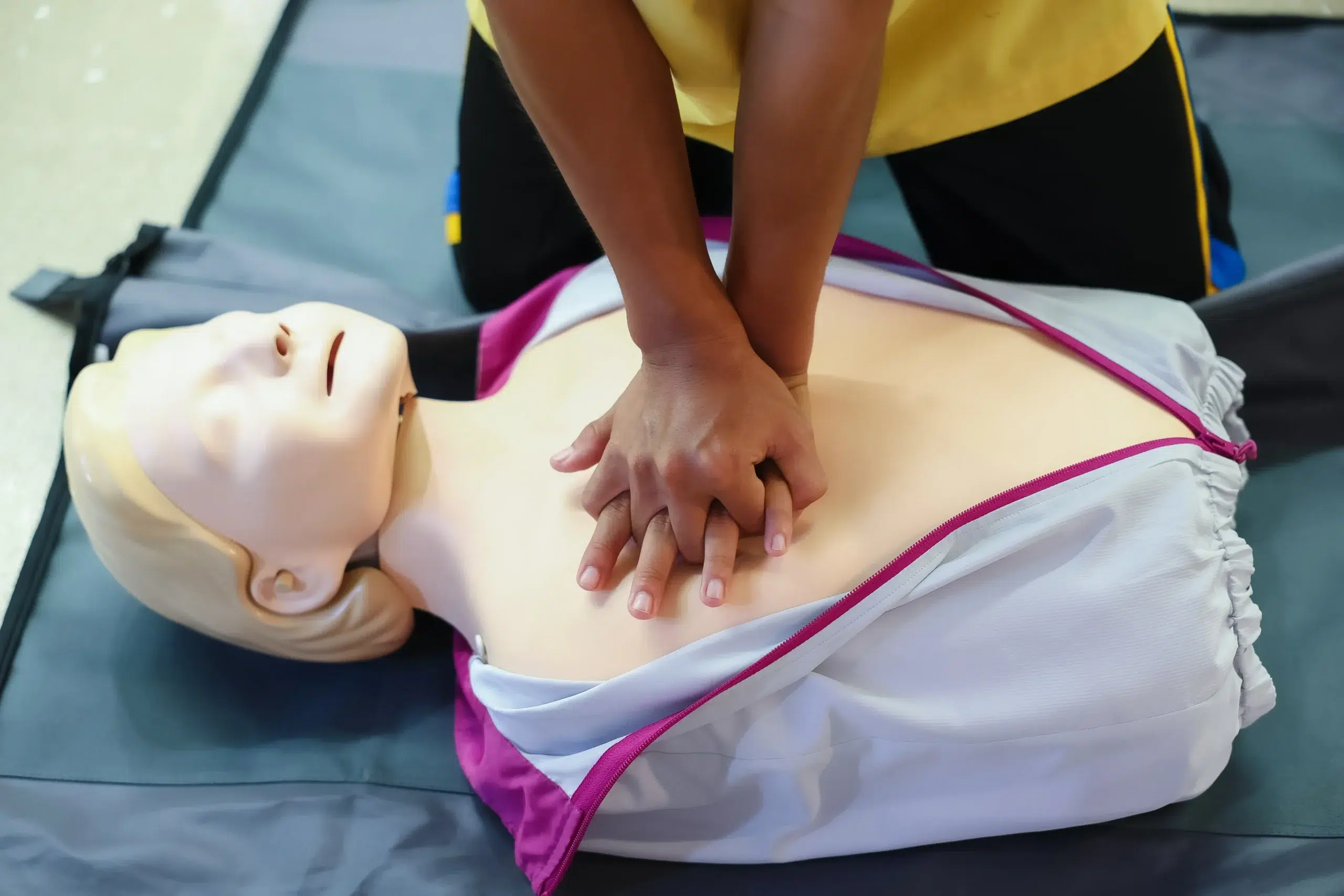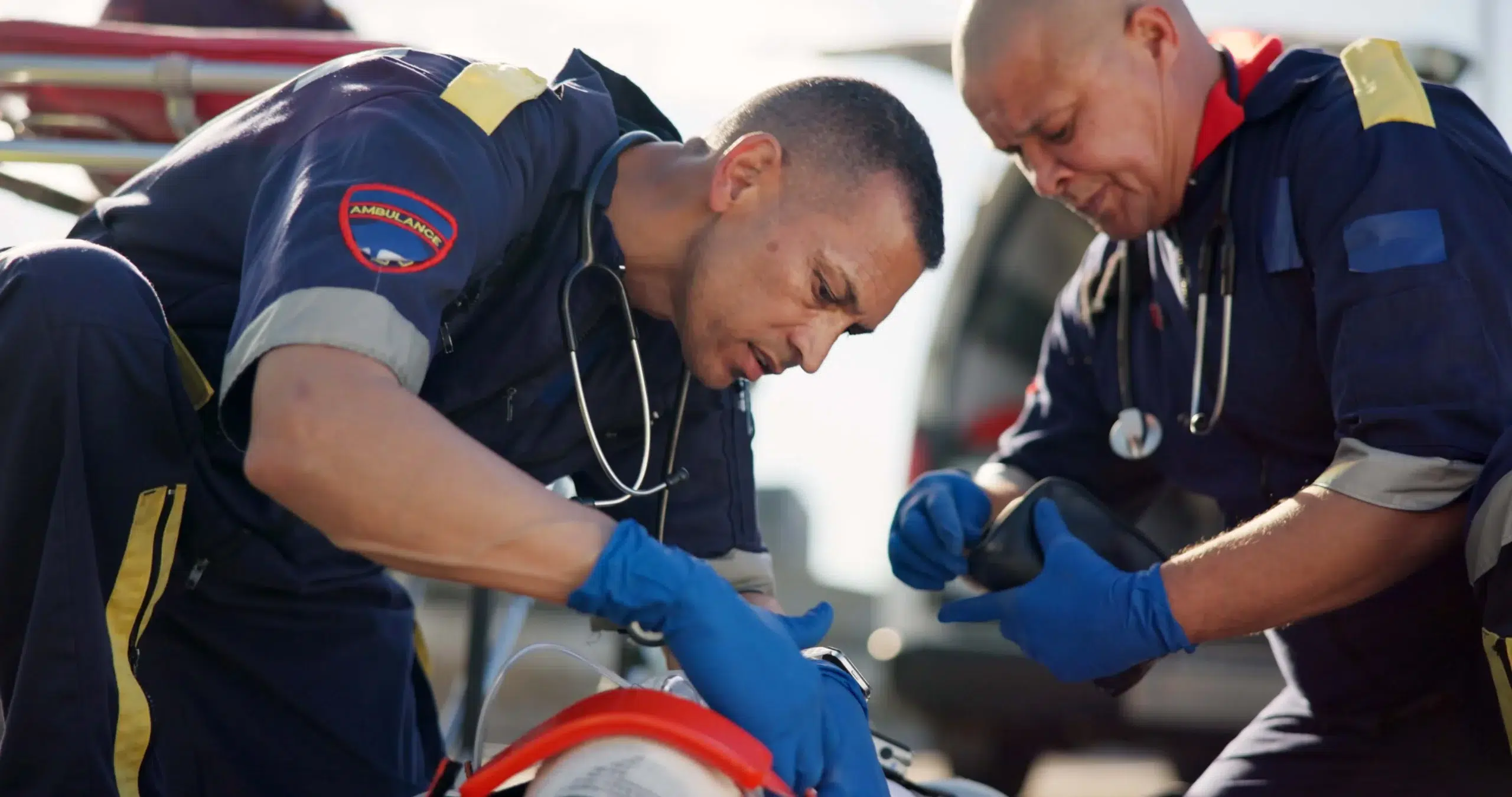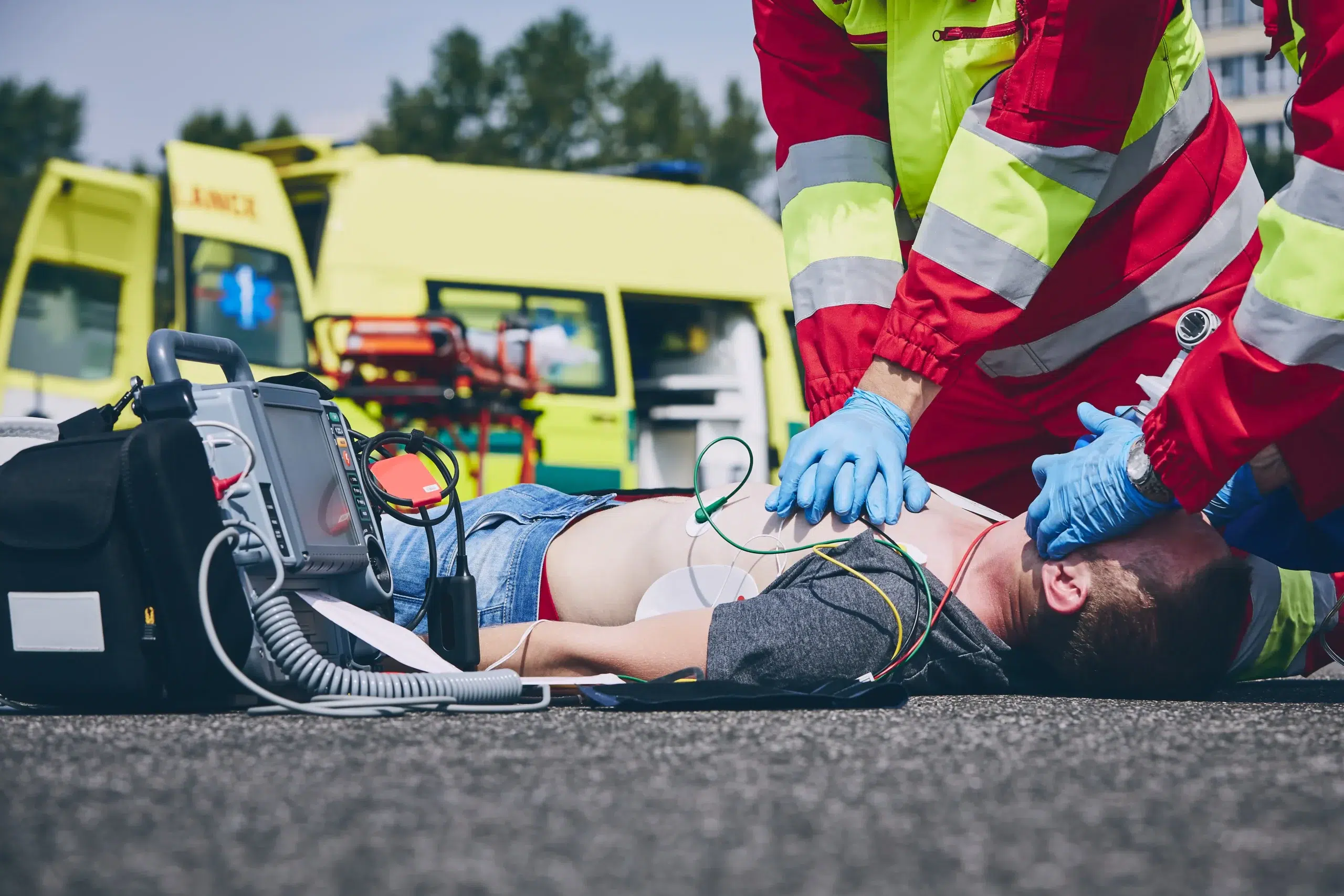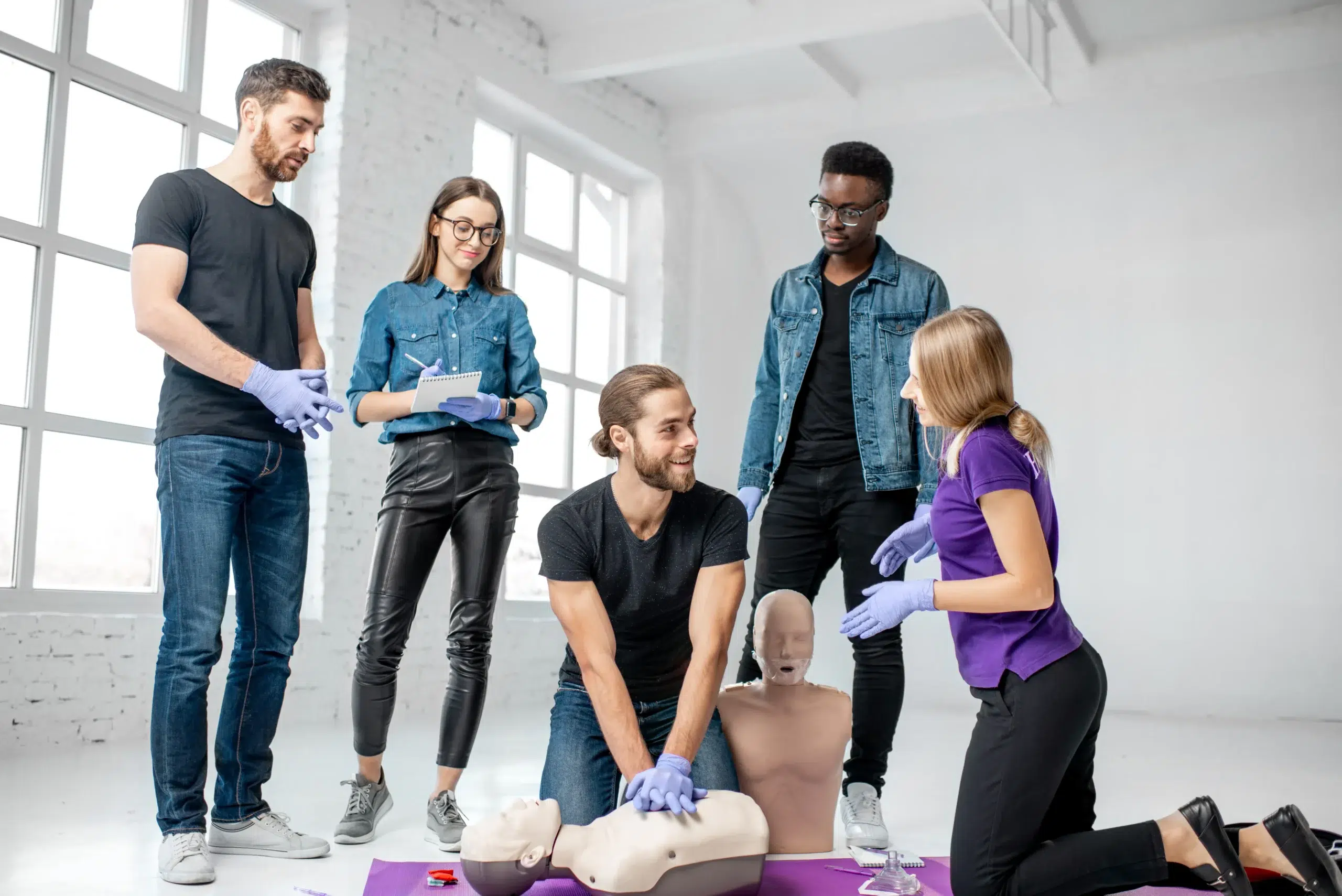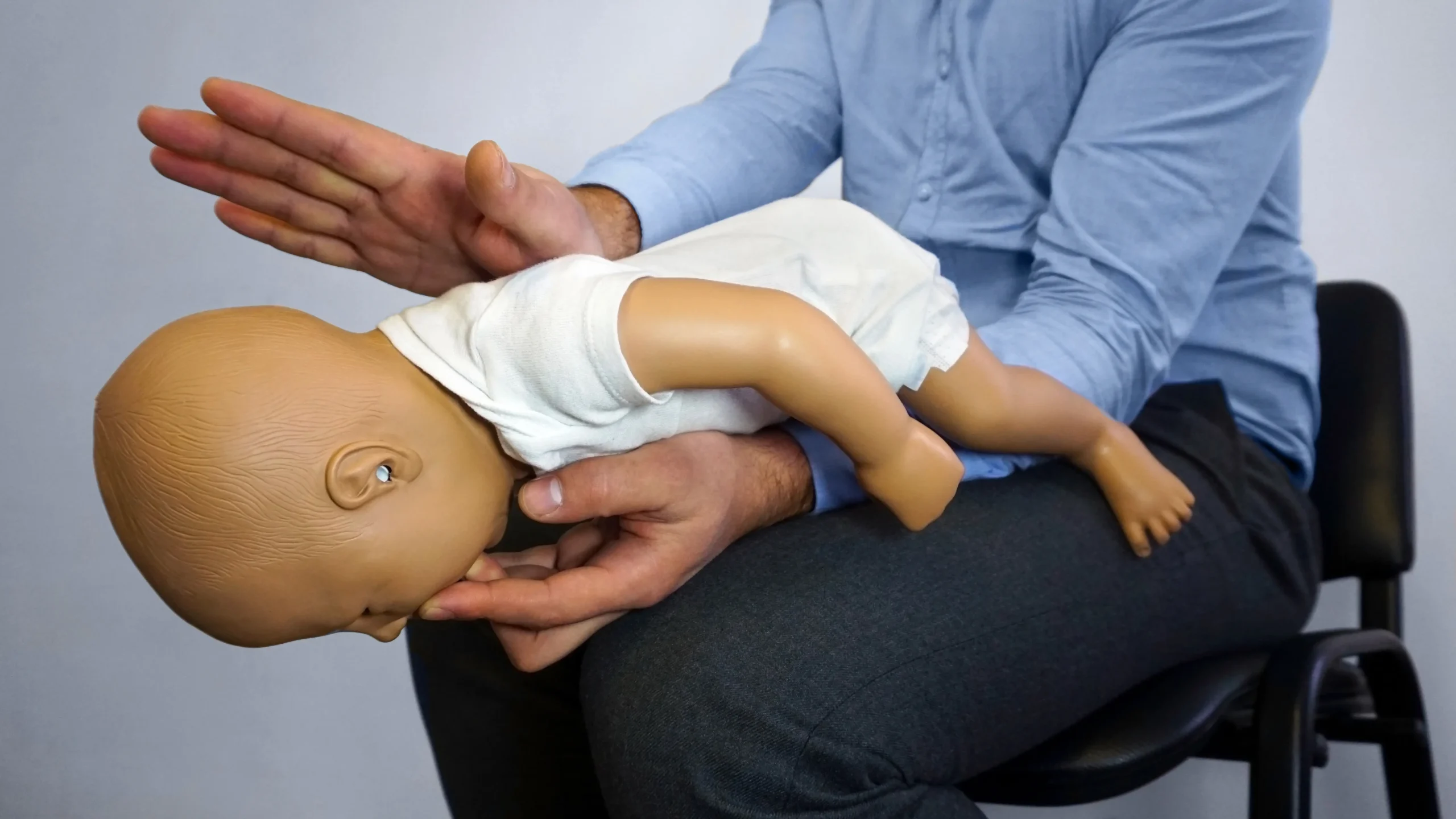Emergencies can happen anytime, anywhere. Would you know what to do if someone near you experienced sudden cardiac arrest? CPR (Cardiopulmonary Resuscitation) is a life-saving technique that can significantly improve the chances of survival in these critical situations. This guide explores the importance of CPR, the different types of CPR classes available, and how to find the perfect course to match your needs. We’ll also discuss the costs and benefits of CPR certification, renewal processes, and where to find top-notch CPR classes in Newark. Empower yourself with the knowledge and skills to make a difference—it could save a life.
Key Takeaways
- CPR skills are essential for everyone: From healthcare professionals to everyday people, knowing CPR can make a real difference in life-or-death situations. Find a class that fits your needs, whether it’s BLS, Heartsaver, or a specialized course like PALS.
- Choose a CPR class format that works for you: In-person training offers hands-on practice and direct feedback from instructors, while blended learning provides flexibility for busy schedules. Consider your learning style and available time when making your decision.
- CPR certification is an investment in yourself and your community: Look for affordable options and discounts, and remember that the skills you gain can enhance your resume, meet workplace requirements, and empower you to confidently handle emergencies.
What is CPR and Why Does it Matter?
CPR (Cardiopulmonary Resuscitation) is a life-saving technique used in emergencies when someone’s heartbeat or breathing has stopped. It involves chest compressions and, sometimes, rescue breaths. These actions maintain blood flow to the brain and other vital organs until professional medical help arrives. Learning CPR empowers you to respond effectively in critical situations and potentially save a life. CPR can significantly improve the chances of survival following cardiac arrest, especially if performed immediately.
CPR Class Types
Several types of CPR classes cater to different needs and skill levels. BLS certification is designed for healthcare providers and those in medical professions. It covers a broader range of skills, including using an AED (Automated External Defibrillator) and two-rescuer CPR. Heartsaver CPR courses, including Heartsaver First Aid CPR AED, are geared towards the general public and cover essential CPR techniques and AED use for adults, children, and infants. Hands-only CPR is also gaining popularity. This method focuses on continuous chest compressions without rescue breaths and can be taught quickly, making it more accessible.
Who Needs CPR Certification?
While everyone can benefit from knowing CPR, certain professions often require it. Healthcare providers, teachers, coaches, and childcare workers are among those who typically need CPR certification. Many employers also mandate CPR training for their employees, particularly in healthcare, education, and safety-related fields. This requirement ensures a safe environment and preparedness for emergencies in the workplace. Beyond professional obligations, anyone interested in being prepared for unexpected situations, such as parents, grandparents, or community members, should consider getting CPR certified. Knowing CPR can provide peace of mind and empower you to act confidently in a crisis.
Find the Right CPR Class
Knowing which CPR class is right for you depends on your specific needs. Are you a healthcare professional, a concerned parent, or fulfilling a job requirement? This section breaks down the different types of CPR classes available so you can choose the best fit. We offer various CPR and First-aid certification courses in Newark to meet your needs.
BLS for Healthcare Providers
Basic Life Support (BLS) for Healthcare Providers is designed for medical professionals like doctors, nurses, paramedics, and other healthcare workers. This BLS course covers essential life-saving skills, including high-quality CPR for single and multiple rescuers, using an AED, and relief of choking. The emphasis on teamwork and advanced techniques makes it crucial for those in hospitals, clinics, and other healthcare settings.
Heartsaver CPR AED
Heartsaver CPR AED courses are perfect for anyone who wants to learn CPR and how to use an AED, but doesn’t work in healthcare. This includes teachers, coaches, childcare providers, parents, and other community members. It focuses on core CPR skills and AED use for adults, children, and infants. This course empowers you to respond confidently to cardiac emergencies and provide immediate assistance until professional help arrives.
PALS
Pediatric Advanced Life Support (PALS) is a specialized course for healthcare providers who treat infants and children. It delves into the specific physiological differences between children and adults, equipping participants with the knowledge and skills to manage pediatric emergencies. PALS covers various critical situations, from respiratory distress and shock to cardiac arrest. Consider exploring our information on RQI classes for insights into another crucial aspect of pediatric care.
First Aid + CPR
Combining First Aid and CPR training provides a well-rounded approach to emergency preparedness. Learning First Aid equips you to handle injuries like cuts, burns, and fractures, while CPR training prepares you for life-threatening cardiac events. This comprehensive skill set makes you a valuable asset in any emergency. Check out our low price guarantee for combined courses.
CPR Training Myths
One common misconception is that online-only CPR certification is sufficient. While online resources can be helpful supplements, many employers and regulatory bodies, including OSHA, require hands-on training and in-person evaluation. Effective CPR requires practical skills and adaptability to real-life scenarios, developed through physical practice and feedback from a certified instructor. We offer discounted group classes for businesses and organizations.
What Happens in a CPR Class?
So, you’ve decided to take a CPR class—fantastic! Knowing what to expect can help you feel prepared and ready to learn. Here’s a look inside a typical CPR class:
Class Length and Format
Most CPR classes are about three hours long, providing plenty of time to learn the material and practice your skills. This allows instructors to cover key topics in-depth and answer all your questions. Classes come in different formats, including traditional in-person sessions, online courses, and blended learning that combines online modules with hands-on practice. Blended learning offers flexibility if you have a busy schedule.
Practice and Skills Tests
Hands-on practice is a core part of effective CPR training. You’ll use advanced manikins that give realistic feedback on your compressions and breaths. This practice helps you develop muscle memory and confidence, preparing you to act quickly in a real emergency. Instructors will evaluate your technique throughout the course to make sure you’re performing CPR correctly.
Online and Blended Learning
If you have a packed schedule, online or blended learning CPR courses might be a good choice. These formats let you learn at your own speed and often include videos, interactive exercises, and online assessments. Even with online courses, remember that in-person skills practice is essential for mastering CPR, so most online courses include an in-person component.
Instructor Expertise
Your instructor is key to a positive learning experience. Experienced, certified instructors clearly explain concepts, demonstrate proper techniques, and give personalized feedback. Selecting a class taught by qualified professionals ensures you receive top-notch training that follows industry standards, getting you ready to handle real-life emergencies.
CPR Training Costs & Benefits
Getting CPR certified is an investment in your skills and the safety of your community. Let’s break down the costs associated with CPR training and the valuable benefits you gain.
Course Prices
CPR training costs vary depending on the course type, training provider, and location. Here in Newark, you’ll find competitive pricing for high-quality CPR classes. For example, our AHA-certified CPR and First Aid courses are priced affordably to make them accessible to everyone. Check our website for the most up-to-date pricing on BLS CPR, First Aid, and combination courses. We’re committed to providing accessible training options for our community.
Discounts
We believe everyone should have access to these life-saving skills. That’s why we offer discounts for group CPR training and student discounts. Contact us to learn about current discounts and how you can save on your CPR certification. Our low price guarantee ensures you’re getting the best value for your training.
Certification Perks
Earning your CPR certification is more than just receiving a piece of paper—it’s a powerful credential. Your certification, valid for two years, meets current OSHA standards, demonstrating your commitment to safety. This certification is widely recognized by employers, including hospitals, schools, and other organizations where safety is paramount. It can enhance your resume, open new job opportunities, and, most importantly, empower you to act confidently in emergencies.
CPR Certification: Validity & Renewal
How Long is Certification Good For?
CPR certifications are generally valid for two years. This is the standard timeframe set by most organizations, including the American Heart Association (AHA) and the American Red Cross. After two years, renewing your CPR certification is essential to stay up-to-date with the latest guidelines and techniques. This ensures you’re prepared to respond effectively in an emergency. For residents of Newark, Fremont, and San Jose, Safety Training Seminars offers a variety of CPR certification courses to meet your needs.
Renewing Your Certification
While two years is the standard, some professions or organizations may require more frequent renewals, sometimes annually. Always double-check the specific requirements of your workplace or licensing board. Healthcare providers, for instance, often have stricter guidelines. Staying informed about these requirements helps you avoid any lapses in your certification and maintain your qualifications. Check with your employer or professional organization for their specific CPR renewal guidelines.
Staying Sharp Between Certifications
Even with a valid certification, CPR skills can decline over time. Studies show a noticeable decrease in proficiency just a few months after training. Regular practice and refresher courses are key to staying sharp. Think of it like any other skill—practice builds confidence and effectiveness. Consider short practice sessions or signing up for a refresher course to stay prepared. The American Red Cross offers resources and information on maintaining CPR skills. For those in the Newark area, Safety Training Seminars provides various options to help you maintain your skills and confidence.
Top CPR Training in Newark
Finding the right CPR class can feel overwhelming, but plenty of excellent resources are available in Newark. Whether you’re a healthcare provider, a student, or just someone who wants to be prepared for emergencies, there’s a course out there for you. Here’s a rundown of reputable training providers in the area:
Safety Training Seminars
Safety Training Seminars offers AHA-certified BLS, ACLS, PALS, and First Aid courses right here in Newark. They’re known for their flexible scheduling, including weekend and evening classes, and a commitment to keeping prices accessible with a low-price guarantee. They also offer discounted rates for group training, which is perfect for workplaces or community groups. Serving Newark, Fremont, and San Jose, their focus is on providing high-quality instruction that prepares you for real-life emergencies. Check their website for the latest BLS course schedule.
American Red Cross
The American Red Cross is a trusted name in emergency preparedness, and their Northern California chapter offers a range of CPR and First Aid courses. They provide training options for everyone from healthcare professionals to concerned citizens. The Red Cross often has promotions and discounts on training materials, so it’s worth checking their site for current deals. They also offer online and blended learning courses that combine online instruction with in-person skills sessions.
AHA Training Centers
Beyond Safety Training Seminars, other AHA Training Centers in and around Newark offer various CPR and emergency cardiovascular care certifications. These centers adhere to the AHA’s rigorous standards, ensuring you receive high-quality training from certified instructors. A quick search online for “AHA Training Centers near me” can help you find a convenient location and course schedule. Look for training centers that offer courses like BLS, ACLS, PALS, and Heartsaver CPR/AED.
Hospitals & Medical Centers
Hospitals like Newark Beth Israel Medical Center often have dedicated training centers that offer CPR classes, especially for healthcare providers. These courses may be more specialized and focus on advanced life support skills. Check with local hospitals and medical centers for their course offerings and schedules. Their programs often include RQI training for healthcare professionals seeking to maintain their resuscitation skills.
Community Colleges & Adult Education
Many community colleges and adult education programs offer CPR and First Aid training. These classes are often more budget-friendly and cater to the community’s needs. They’re a great option for those looking for a convenient and affordable way to learn these essential skills. Check with your local community college or adult education center for upcoming courses and registration information.
Related Articles
- CPR Certification in Newark: Your Complete Guide – Newark CPR Classes
- Why CPR Is Critical in Saving Lives
- CPR Certification in Fremont: A Complete Guide
- CPR Classes in Fremont: A Comprehensive Guide
- Common CPR Myths Debunked for Better Emergency Response
Frequently Asked Questions
What’s the difference between BLS and Heartsaver CPR?
BLS (Basic Life Support) is designed for healthcare professionals and includes more advanced techniques like using a bag-valve mask and two-rescuer CPR. Heartsaver CPR focuses on essential CPR skills and AED use for adults, children, and infants, making it suitable for anyone, including teachers, parents, and community members. The best choice depends on your specific needs and whether your workplace requires a healthcare provider-level certification.
How long does it take to get CPR certified?
Most CPR classes run for about three hours, though this can vary slightly depending on the specific course and training provider. This timeframe allows ample opportunity for both learning the material and practicing the techniques.
Is online-only CPR certification enough?
While online CPR courses offer a convenient way to learn the basics, they typically don’t meet workplace requirements. Most employers and organizations, including OSHA, mandate hands-on training and in-person skills assessment. This practical component is crucial for developing the muscle memory and confidence needed to perform CPR effectively in a real emergency.
How much does CPR training cost?
The cost of CPR training varies based on the course type, location, and training provider. However, many affordable options are available, including group discounts and student rates. Check with different providers in your area to compare prices and find a course that fits your budget. Remember, investing in CPR training is an investment in your ability to save a life.
How often do I need to renew my CPR certification?
CPR certifications are typically valid for two years. Staying current with the latest guidelines and techniques is crucial, so renewing your certification every two years is essential. Some professions or organizations may require more frequent renewals, so it’s always best to check specific requirements with your employer or licensing board.
